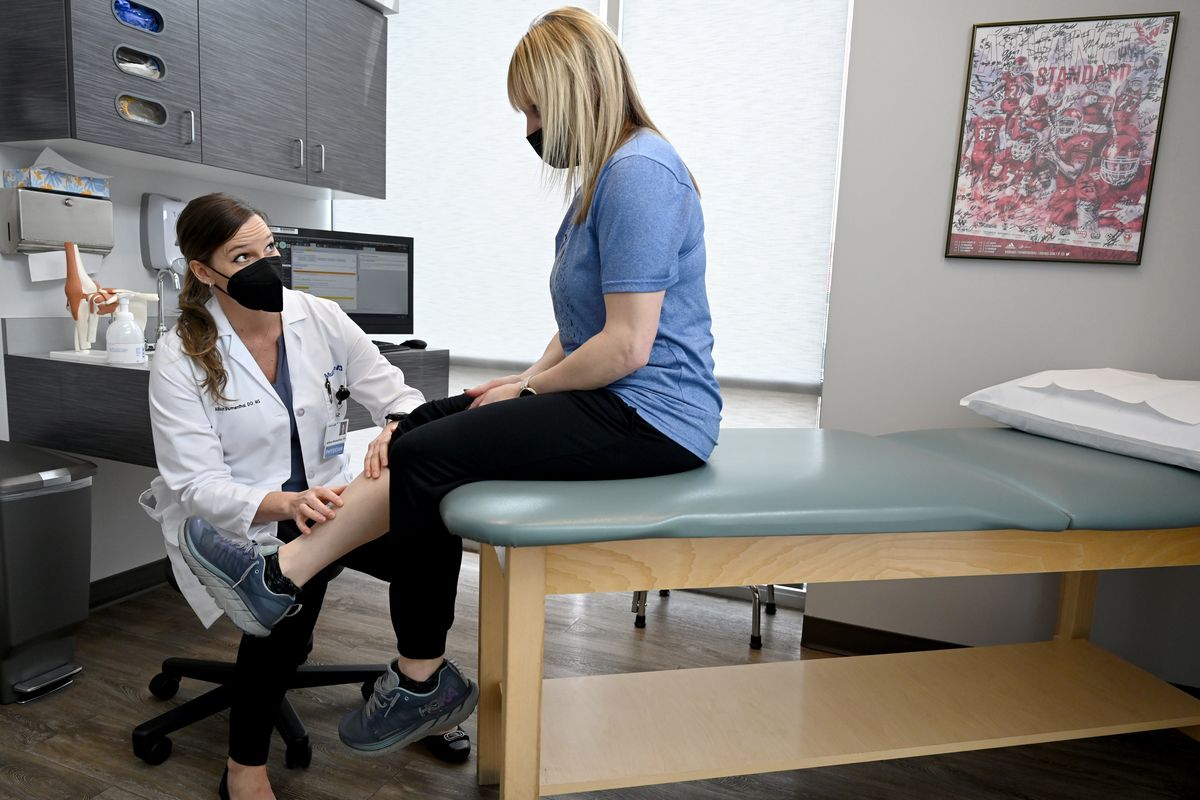Staying active: Orthopedic specialists are among the speakers at senior living expo Saturday at Davenport Grand

Adults should get at least 2½ hours per week of moderate-intensity aerobic activity, or a more vigorous 75 minutes, health experts say. That minimum exercise goal can be a combination of both activities spread out in time blocks.
But any movement is challenging if your body hurts.
Since staying on the move is key for health and wellness, a panel of MultiCare orthopedic specialists will share their expertise at Saturday’s Active Living Expo. Dr. Allison Blumenthal, a sports fellowship-trained orthopedic surgeon, is scheduled to be among them.
“I think it’s important for everyone to be able to stay active, and of course as we get older, that tends to be a little bit more difficult or at least more injury-prone at times,” Blumenthal said.
“There’s a fine balance between staying active and not overexerting yourself, but there are all the benefits of being as active as we can, which is important.”
The Active Living Expo, a popular community event for people ages 55 and older, is scheduled for 10 a.m.-4 p.m. Saturday at the Davenport Grand Hotel in downtown Spokane.
The orthopedic specialists panel is set for 11:30 a.m. with Blumenthal, Dr. Roberto Calderon, another orthopedic surgeon, and Dr. Nick Strasser, a primary care sports medicine doctor.
Also at the expo, visitors can learn about products and services available from more than 50 vendors ranging from financial strategies to travel tips. The presentations cover topics such as more health and wellness, elder law issues, home health care, understanding Medicare and personal organizing. Interactive activities include a Pilates mini-class and a fashion show.
The Active Living Expo is organized by The Spokesman-Review, with support from presenting sponsor MultiCare Health System Inland Northwest. The event’s emcee, KHQ’s Claire Graham, will help guide visitors to booths featuring retirement planners, travel experts and even The Spokesman-Review’s Northwest Passages Community Forum and Book Club. Entertainment will be provided along with a free photo booth.
Blumenthal said the orthopedics panel expects to share topics on staying active, movement and what to do when issues arise, while also allowing for questions and answers. She specializes in minimally invasive arthroscopic surgeries and joint preservation procedures.
Especially in the past 10 years, newer technology and procedures allow for more options than what people typically think, which is solely joint replacements, she said. Certain movement issues and injuries vary based on genetics, age and prior injuries, activity and the amount of degeneration in the body.
“As we age, we can have more wear and tear and arthritis, but at the same time, joint replacement surgery is not always the only option,” Blumenthal said.
“Not only do our bones and other hard structures get injured, as far as the fragility of them, but our tendons and ligaments can, as well. Oftentimes, there are a lot of options between doing nothing and surgery. There are other tendon and ligament surgeries that we can do and cartilage preservation procedures.”
The procedures are primarily done at the hospital or a surgery center. Although Blumenthal does full-joint replacements – more so for shoulders – her focus is doing the minimally invasive options.
Doing a scope is a shortened term that’s sometimes used to describe that, she said.
“It’s just more minimally invasive, and it tends to be poke-hole incisions around the joint, to look in with kind of a video camera and treat as necessary through those smaller incisions. I would say it’s more kind of cleaning things up, if you will, rather than scraping things out, and then occasionally repairing tendons or ligaments as needed.”
That might be cleaning up wear and tear within the joint, and loose bodies that flow around the joint, which can cause pain and dysfunction.
“There is some of the arthritis that we can kind of smooth down, but there’s not much we can do to replace that apart from joint replacement,” Blumenthal said. “But it’s mainly the ligaments, the tendons, the soft tissue structures that might be frayed and torn that we can clean up.
“We’ve come a long way as far as technology and trying to make things as minimally invasive as possible, but we use things like stitches to help repair certain tissues, sometimes requiring packing that back down into the bone itself.”
Those tools, video camera technology and poke-hole incisions enable surgeons to see inside the joint without having to open it up with a big incision, she added.
“Technology is always changing and improving as far as trying to make it faster for healing as well as less invasive,” she said.
“Even in the field of orthopedic itself, that physicians are becoming more specialized in their particular field has really grown even in the past 10 years because there are so many different new and specific procedures for different ailments.”
While it’s important to stay active, that in itself doesn’t mean you’ll have issues, but if you do have pain with movement, ask about it, she said.
Steps might mean talking to someone about the right ways to be active for your body and makeup, or perhaps physical therapy, more conservative treatments or even surgery, Blumenthal said.